Abstract Painting Guide for Beginners
Welcome to the vibrant world of abstract painting! If you’ve ever felt the urge to express your emotions through colors and shapes rather than the confines of realism, you’re in the right place. This guide is designed specifically for beginners who are eager to unleash their creativity and dive into the expressive realm of abstract art. Abstract painting is not just about splashing paint on a canvas; it’s about conveying feelings, ideas, and experiences without the limitations of traditional forms. Whether you're looking to explore your artistic side as a hobby or considering a more serious pursuit, this guide will provide you with the essential tools, techniques, and inspiration to get started.
So, what exactly is abstract painting? In essence, it breaks away from traditional representation. Instead of depicting recognizable objects or scenes, abstract art focuses on the use of colors, shapes, and forms to create a visual language that communicates on a deeper level. It invites the viewer to interpret the artwork in their own way, making each piece a unique experience. Think of it as a conversation without words—where every brushstroke and color choice speaks volumes about the artist's inner world.
Throughout this guide, we will cover a variety of topics to equip you with the knowledge you need to embark on your abstract painting journey. From understanding the historical context of abstract art to selecting the right materials and mastering essential techniques, we’ll explore every facet of this exciting art form. You might be wondering, “Where do I even begin?” Don’t worry! We’ll break it down step by step, ensuring you feel confident as you pick up that brush for the first time.
We’ll also delve into the importance of finding inspiration, which is crucial for any artist. Inspiration can be drawn from the world around you—nature, personal experiences, or even the emotions you feel on a given day. The beauty of abstract painting lies in its subjectivity; there are no right or wrong answers, only your personal interpretation. So, get ready to explore your creativity, challenge your perceptions, and most importantly, have fun!
As we navigate through this guide, remember that the journey of becoming an abstract artist is as important as the final outcome. Allow yourself to experiment, make mistakes, and learn from them. Each painting will be a reflection of your growth and evolution as an artist. So, grab your materials, open your mind, and let’s dive into the fascinating world of abstract painting!
- What is abstract painting? Abstract painting is an art form that uses colors, shapes, and forms to convey emotions and ideas, without depicting recognizable objects or scenes.
- Do I need to have prior painting experience? No, abstract painting is accessible to everyone, regardless of skill level. This guide is tailored for beginners!
- What materials do I need to start? Basic materials include paints (acrylics or oils), brushes, canvases, and a palette. We will discuss these in detail in the following sections.
- How can I find inspiration for my abstract art? Inspiration can come from various sources such as nature, personal experiences, or even your emotions. We'll explore these ideas further in the guide.
- Is there a specific technique I should follow? There are many techniques in abstract painting, such as layering and color blocking. The key is to experiment and find what works best for you!

Understanding Abstract Art
Abstract art is not just a style; it's a profound way of expressing emotions, ideas, and perceptions that often defy traditional representation. This genre emerged in the early 20th century as artists began to break away from the constraints of realism, seeking new avenues to convey their thoughts. Imagine stepping into a world where colors, shapes, and forms swirl together to create a visual symphony that speaks to the soul. Isn't that a fascinating concept?
To truly appreciate abstract art, it's essential to understand its history and significance. The movement gained momentum with artists like Wassily Kandinsky, Piet Mondrian, and Jackson Pollock, who challenged the norms of painting. They believed that art should not merely replicate the visible world but instead evoke feelings and provoke thoughts. Abstract art encourages viewers to engage with the piece on a personal level, allowing each person to derive their own meaning from the artwork.
One of the most exciting aspects of abstract art is its diversity. It encompasses various styles and techniques, from geometric shapes to fluid, organic forms. This vast range allows artists to experiment freely, using color and form to express their inner worlds. In fact, abstract art can be categorized into several movements, including:
- Abstract Expressionism: Focuses on spontaneous, automatic, or subconscious creation.
- Geometric Abstraction: Emphasizes the use of geometric forms and shapes.
- Lyrical Abstraction: Combines gestural brushwork with color and form to express emotion.
These movements not only highlight the evolution of abstract art but also showcase the myriad ways artists can interpret their surroundings. When you look at an abstract painting, it's like peering into the artist's mind, where every stroke of the brush carries a piece of their story.
Moreover, the significance of abstract art extends beyond aesthetics. It serves as a mirror reflecting societal changes and the human experience. During tumultuous times, such as the World Wars, artists used abstraction to express their feelings of chaos and uncertainty. In this way, abstract art becomes a historical document, capturing the essence of its time while remaining timeless in its appeal.
As you embark on your journey into the world of abstract painting, remember that there are no right or wrong interpretations. Each piece invites you to explore your emotions and thoughts, making it a personal experience. So, whether you're drawn to vibrant colors that evoke joy or darker tones that resonate with introspection, allow yourself to be swept away by the beauty of abstraction.
In conclusion, understanding abstract art is about embracing the unknown and finding meaning in what might initially seem chaotic. It's a celebration of creativity that encourages you to think outside the box and express yourself in ways that words often cannot. So, grab your brushes and let the colors flow; the world of abstract art awaits!
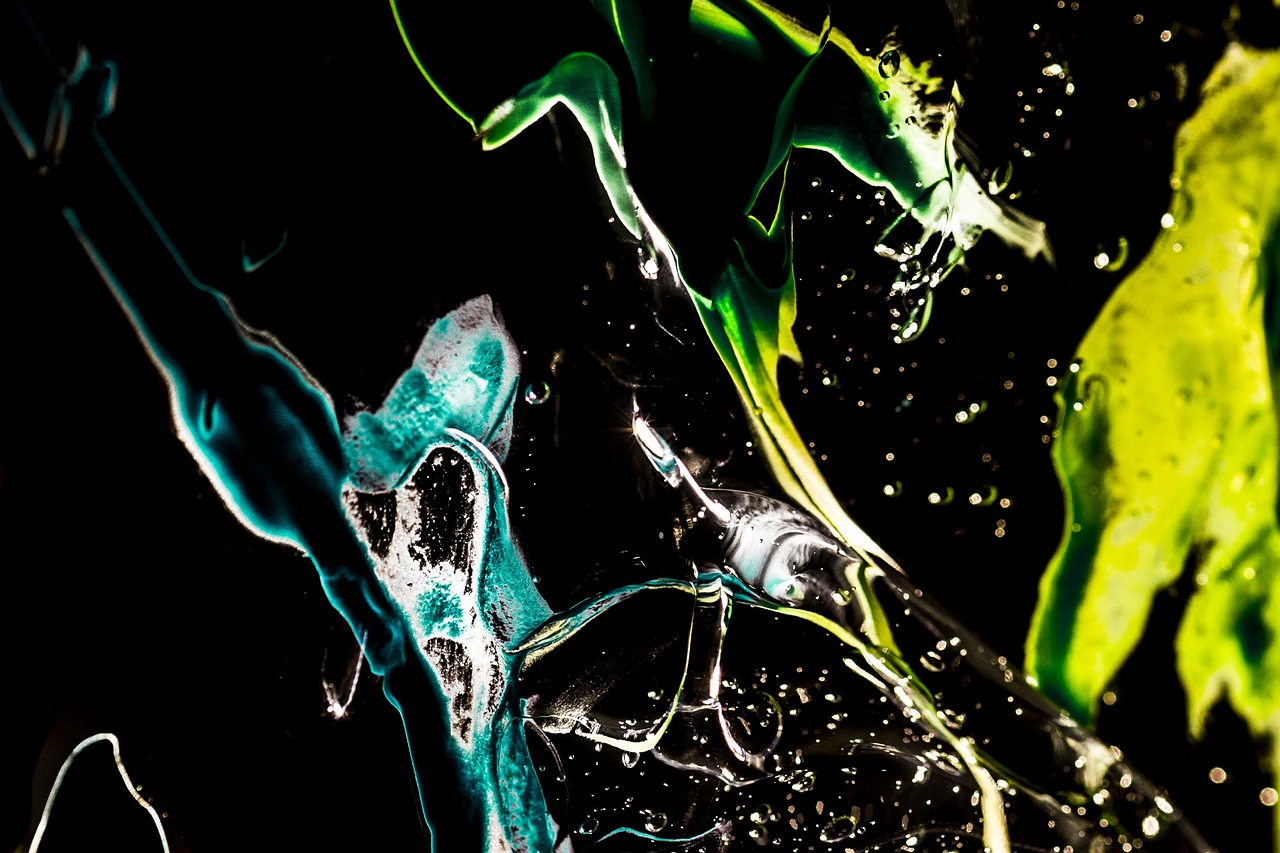
Essential Materials for Abstract Painting
When diving into the vibrant world of abstract painting, having the right materials at your fingertips can make all the difference. Think of your art supplies as the instruments in a symphony; without them, the music simply won't play! The essential materials for abstract painting include a variety of paints, brushes, canvases, and additional tools that can help you unleash your creativity. Let's explore these components in detail to ensure you are well-equipped for your artistic journey.
First and foremost, the type of paints you choose is crucial. Acrylic paints are often the go-to for beginners due to their versatility and quick-drying nature. They allow for easy layering and can be mixed with various mediums to achieve different textures and effects. On the other hand, oil paints offer a rich depth of color and texture, but they require a bit more patience due to their longer drying times. Watercolors, while less commonly used in abstract painting, can produce stunningly delicate effects that might inspire your work.
| Type of Paint | Properties | Best For |
|---|---|---|
| Acrylic | Fast-drying, versatile | Layering, mixed media |
| Oil | Rich colors, slow-drying | Textured effects, blending |
| Watercolor | Translucent, delicate | Soft washes, subtle effects |
Next up are the brushes. The right brushes can significantly impact the texture and detail of your artwork. A variety of brush types, such as flat, round, and filbert, can help you achieve different effects. For instance, flat brushes are excellent for bold strokes and color blocking, while round brushes are perfect for finer details. Don't forget to consider the size of the brushes as well; having a range of sizes will allow you to adjust your technique and create dynamic compositions.
And let's not overlook the importance of canvases. The surface you paint on can influence the overall outcome of your piece. You can choose from stretched canvases, canvas boards, or even paper designed for acrylics or oils. Each surface has its own unique texture and absorbency, which can alter how your paints interact. It's worth experimenting with different surfaces to find what resonates with your style.
In addition to paints, brushes, and canvases, there are other materials that can enhance your abstract painting experience. Consider using palettes for mixing colors, palette knives for applying thick layers of paint, and even spray bottles for creating interesting textures. These tools can help you explore various techniques and push the boundaries of your creativity.
In summary, equipping yourself with the right materials is the first step toward creating captivating abstract art. With a selection of paints, brushes, canvases, and additional tools, you'll be ready to express your unique vision. Remember, the journey of art is as much about the process as it is about the final piece, so enjoy experimenting and discovering what works best for you!
- What type of paint is best for beginners? Acrylic paint is often recommended for beginners due to its ease of use and quick drying time.
- Do I need to use expensive materials to create good abstract art? No, you can start with affordable materials and gradually invest in higher quality supplies as you develop your skills.
- Can I use non-traditional surfaces for painting? Absolutely! Many abstract artists experiment with surfaces like wood, cardboard, or even fabric.
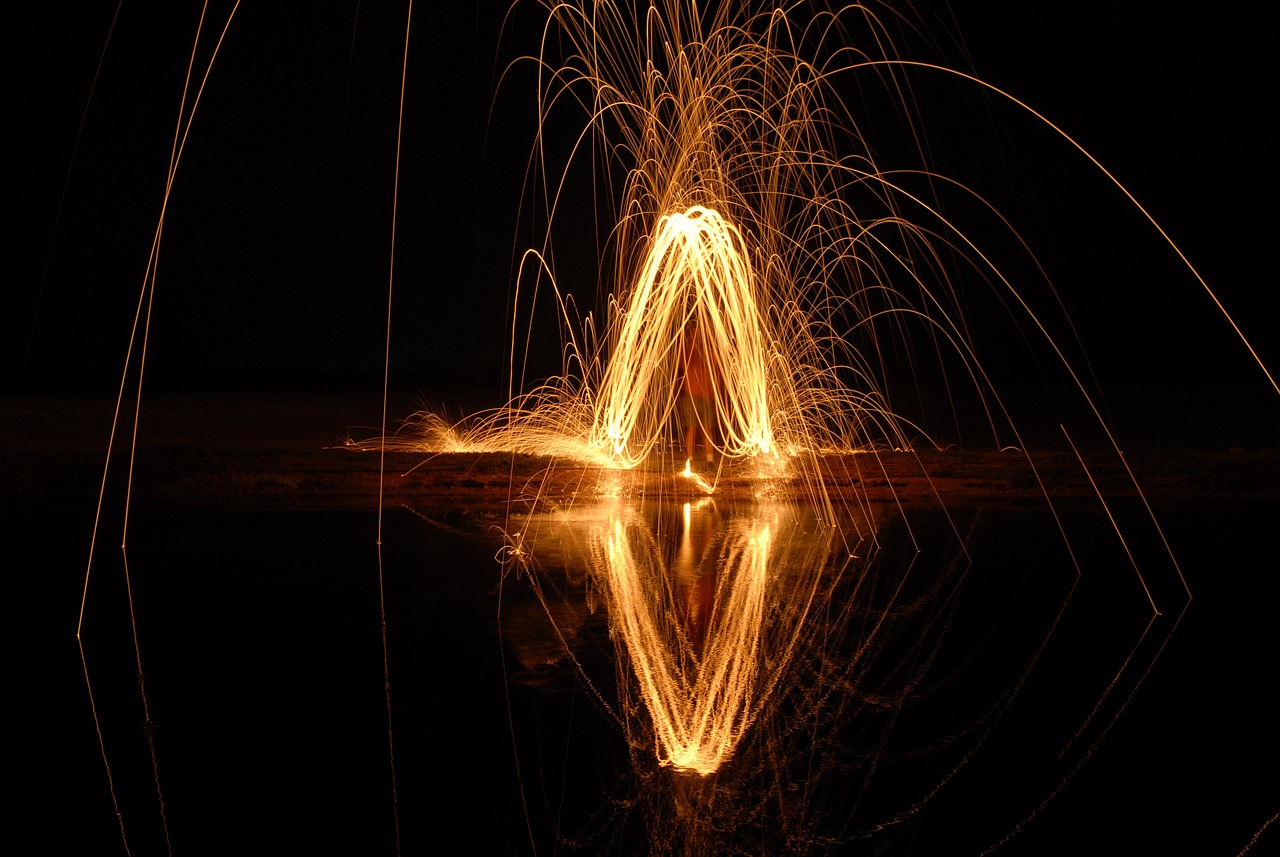
Types of Paints
When it comes to abstract painting, the choice of paint can significantly influence your artistic expression. Each type of paint brings its own unique characteristics, allowing artists to explore various techniques and styles. Let's dive into the three most popular types of paints used in abstract art: Acrylics, Oils, and Watercolors.
Acrylic Paints are a favorite among beginners and seasoned artists alike. Their versatility is unmatched; they can mimic the appearance of both oil and watercolor paints depending on how they are used. One of the standout features of acrylics is their quick-drying nature, which allows artists to layer their work without long waiting periods. This means that if you’re feeling inspired, you won’t have to pause for hours while your previous layers dry. Additionally, acrylics can be diluted with water or mixed with mediums to create different textures and finishes. Imagine being able to create a glossy finish one moment and a matte texture the next, all with the same paint!
Oil Paints, on the other hand, are known for their rich colors and smooth texture. They take longer to dry, which can be a double-edged sword. On one hand, this extended drying time allows for blending and layering techniques that can produce stunning visual effects, but on the other hand, it requires patience. Oil paints are perfect for artists who enjoy working slowly and meticulously. They can also be mixed with various mediums to create different effects, such as impasto for thick textures or glazes for translucent layers. If you’re looking to create depth in your work, oils might just be your best friend.
Lastly, we have Watercolors, which are often associated with delicate washes and subtle hues. While they may seem less popular in the realm of abstract art, watercolors can be incredibly expressive when used creatively. The key with watercolors is to embrace their fluidity; they can create beautiful gradients and soft edges that are hard to achieve with other mediums. For those who love spontaneity, watercolors allow for quick brushstrokes and unexpected outcomes, making every piece a unique adventure. However, mastering watercolors can take time, as they require a good understanding of water control and paper texture.
In summary, each type of paint offers its own set of advantages and challenges. Here’s a quick comparison:
| Type of Paint | Drying Time | Best For |
|---|---|---|
| Acrylics | Fast | Layering, versatility, mixed media |
| Oils | Slow | Blending, depth, rich textures |
| Watercolors | Varies | Soft washes, spontaneity, subtle effects |
Choosing the right paint ultimately depends on your personal style and what you aim to achieve in your artwork. So, whether you’re drawn to the quick-drying, adaptable nature of acrylics, the lush richness of oils, or the gentle fluidity of watercolors, each paint type can help you express your creativity in unique ways. Now, let’s explore some fundamental techniques that will elevate your abstract painting skills!
- What is the best type of paint for beginners? Acrylic paints are often recommended due to their ease of use and quick drying time.
- Can I mix different types of paint? While you can mix some paints, it's generally best to use one type per artwork to maintain consistency in texture and finish.
- How do I choose the right paint for my style? Experiment with different types of paint to see which one resonates with your artistic approach and desired outcomes.
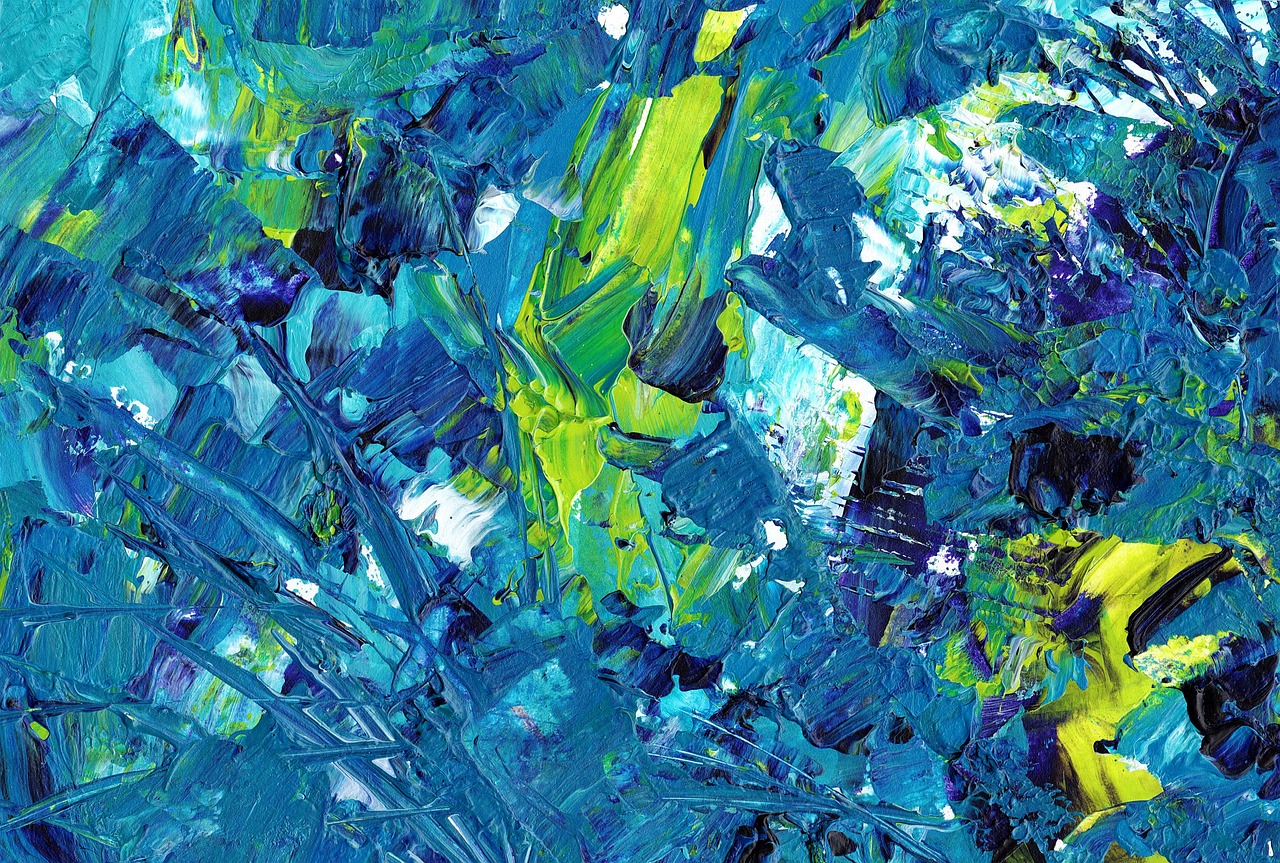
Acrylic Paints
Acrylic paints are often hailed as the **go-to choice** for beginners venturing into the world of abstract painting. Why, you ask? Well, it’s all about their **versatility** and **quick-drying** nature. Unlike oil paints, which can take days or even weeks to dry, acrylics allow you to layer and modify your artwork rapidly, making it easier to experiment without the fear of ruining your hard work. Imagine being able to paint a vibrant sunset and then, just moments later, add a few bold strokes of blue to create a dramatic sky—this is the magic of acrylics!
One of the most appealing aspects of acrylic paints is their **wide range of colors** and **finishes**. They can be used straight from the tube for a **bold and opaque** look or diluted with water for a **watercolor-like effect**. This flexibility means you can create anything from **thick, textured strokes** to **delicate washes**, allowing your creativity to flow freely. Plus, they can be easily mixed with mediums to alter their properties, such as adding a gloss finish or increasing drying time. Here’s a quick overview of the benefits of using acrylic paints:
| Advantages of Acrylic Paints | Description |
|---|---|
| Quick Drying | Allows for rapid layering and adjustments. |
| Versatile | Can be used in various techniques, from thick applications to washes. |
| Easy Cleanup | Water-soluble, making brushes and palettes easy to clean. |
| Vibrant Colors | Offers a wide spectrum of colors that remain bright and true. |
When it comes to application techniques, acrylics shine once again. You can use a variety of tools, from traditional brushes to palette knives and even sponges, to create different textures and effects. Want to create a **smooth gradient**? Just blend your colors while they’re wet! Looking for a more **textured finish**? Try applying thick layers with a palette knife. The possibilities are as endless as your imagination!
Additionally, acrylic paints are **non-toxic** and **water-based**, making them a safe option for artists of all ages. This feature is particularly appealing for those who may be painting in shared spaces or for children who are just discovering their artistic talents. You can dive into your creative process without worrying about harmful fumes or complicated cleanup procedures.
In summary, if you're just starting your journey in abstract painting, acrylic paints are the perfect companion. They offer the freedom to explore your creativity without the constraints that other mediums might impose. So, grab your brushes, squeeze out some vibrant colors, and let your imagination run wild with acrylics!

Oil Paints
This guide offers a comprehensive overview of abstract painting, including techniques, materials, and inspiration. Perfect for beginners looking to explore their creativity through this vibrant art form.
Delve into the history and significance of abstract art, exploring how it diverges from traditional painting. Learn about key movements and artists that have shaped this expressive genre.
Discover the various materials needed for abstract painting, including paints, brushes, and canvases. This section provides guidance on selecting the right tools to unleash your creativity.
Explore the different types of paints used in abstract art, such as acrylics, oils, and watercolors. Each type offers unique properties that can enhance your artistic expression.
When it comes to creating stunning abstract art, stand out for their rich textures and vibrant colors. Unlike their acrylic counterparts, oil paints have a longer drying time, which allows for greater manipulation and blending. This characteristic is particularly beneficial for artists who enjoy working slowly and layering their colors to achieve depth. The creamy consistency of oil paints enables artists to create smooth transitions and intricate details that can bring a painting to life.
One of the most exciting aspects of oil paints is their versatility. They can be thinned with various mediums, such as turpentine or linseed oil, to achieve different effects. For instance, using a medium can create a glaze that enhances the luminosity of your colors. Conversely, when used thickly, oil paints can create a textured surface that adds dimension to your work. Consider experimenting with different techniques, such as impasto, where paint is applied in thick layers to create a three-dimensional effect on the canvas.
However, working with oil paints does come with its own set of challenges. The longer drying time, while advantageous for blending, can sometimes lead to frustrations if you’re eager to see your artwork come together quickly. Additionally, proper ventilation is essential when using oil paints due to the fumes from solvents. Always make sure to work in a well-ventilated area to ensure your safety and comfort.
To help you better understand the properties of oil paints, here’s a quick comparison table:
| Property | Oil Paints | Acrylic Paints |
|---|---|---|
| Drying Time | Slow | Fast |
| Texture | Rich and creamy | Varies from thick to thin |
| Color Vibrancy | High | Moderate to high |
| Blending Capability | Excellent | Good, but dries quickly |
For those looking to dive into the world of oil painting, it’s advisable to start with a basic set of colors. A standard palette might include titanium white, ultramarine blue, cadmium red, yellow ochre, and burnt sienna. With just these colors, you can mix a vast array of shades and tones, allowing for endless creativity. Remember, the key to mastering oil painting lies in practice and experimentation. Don’t be afraid to make mistakes; they often lead to the most beautiful discoveries in art.
Learn fundamental techniques that can help you create stunning abstract paintings. From layering to color blocking, these methods will guide you in developing your unique style.
Explore the principles of color theory and how they apply to abstract painting. Understanding color relationships can enhance your compositions and evoke emotions in your artwork.
Discover the art of layering in abstract painting, which adds depth and complexity. This section provides tips on how to effectively build layers for a striking visual effect.
Inspiration is key to creating meaningful abstract art. This section offers tips on where to find inspiration, from nature to everyday life, to fuel your creativity.
Nature is a rich source of inspiration for abstract artists. Learn how to observe natural elements and translate them into your unique artistic expression.
Your personal experiences and emotions can serve as powerful inspiration. This section discusses how to channel your feelings into your abstract paintings for a more authentic creation.
- What is the best type of paint for beginners? Acrylic paints are often recommended due to their quick drying time and ease of use.
- Can I mix different types of paint? It's generally best to stick to one type of paint for a project, as mixing can lead to unexpected results.
- How do I clean my brushes after using oil paints? Use a solvent like turpentine or mineral spirits to clean your brushes thoroughly.
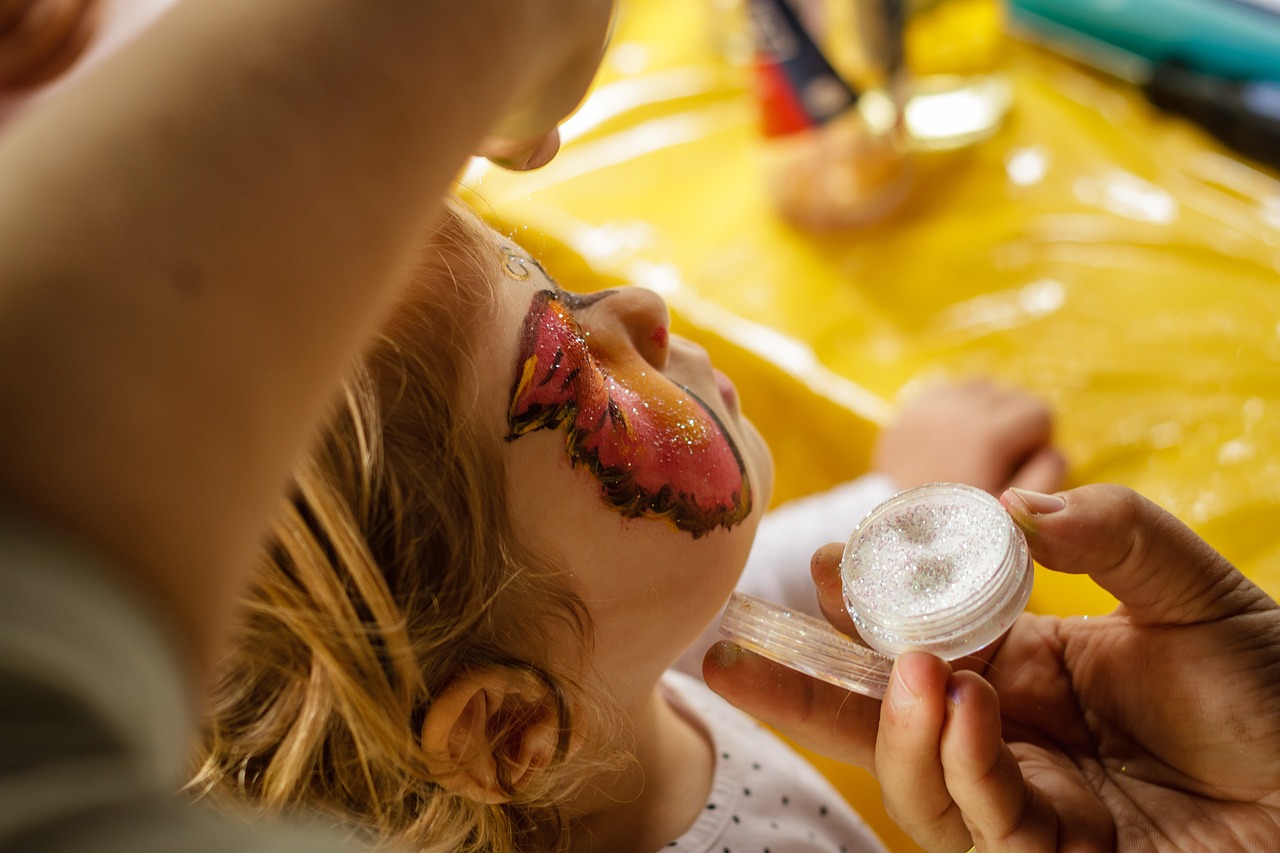
Choosing the Right Brushes
When it comes to abstract painting, the brushes you choose can make all the difference in your creative process. Think of brushes as the magic wands of the art world; they can transform a blank canvas into a vibrant masterpiece. The right brush can help you achieve different textures, effects, and styles, allowing your artistic voice to shine through. So, how do you select the perfect brushes for your abstract creations?
First, it's essential to understand the different types of brushes available. Each brush serves a unique purpose and can produce various effects. For example, flat brushes are fantastic for bold strokes and color blocking, while round brushes are perfect for detailing and swirling colors together. Here’s a quick overview of some common brush types:
| Brush Type | Use | Effect |
|---|---|---|
| Flat Brush | Color blocking, broad strokes | Sharp edges, defined shapes |
| Round Brush | Detail work, fine lines | Curves, swirls, and intricate designs |
| Fan Brush | Texture, blending | Flicks and soft edges |
| Filbert Brush | Soft edges, blending | Rounded edges, versatile strokes |
As you explore these brush types, consider the size and material of the brushes as well. Larger brushes can cover more area quickly, while smaller brushes allow for precision. Additionally, brushes come in various materials, such as synthetic and natural bristles. Synthetic brushes are often more affordable and easier to clean, making them a popular choice for beginners. On the other hand, natural bristle brushes can hold more paint and offer a different texture, which might be preferable for more experienced artists.
Another critical factor to consider is the technique you plan to use in your abstract painting. For instance, if you enjoy layering and creating depth, a variety of brushes in different sizes will be beneficial. You might want to have a selection that includes both wide brushes for covering large areas and finer brushes for adding details. Experimenting with different brushes can lead to exciting discoveries in your art, so don’t hesitate to try out various options!
Lastly, remember that choosing the right brushes is not just about functionality; it’s also about how they feel in your hand. The best brush for you is one that you enjoy using. If a brush feels comfortable and inspires you, it will likely enhance your creative flow. So, take the time to explore and find the brushes that resonate with your artistic style.
- What type of brush should I start with as a beginner? It's best to start with a few basic brushes, such as a flat brush and a round brush, to cover a variety of techniques.
- Can I use any brush for abstract painting? While you can use various brushes, certain types are more suited for specific effects, so it’s good to have a selection.
- How do I clean my brushes after painting? Clean your brushes immediately after use with soap and water or a suitable brush cleaner to maintain their quality.

Techniques for Creating Abstract Art
Creating abstract art is all about expressing your emotions and ideas through vibrant colors and unique forms. It’s a playground for your imagination, allowing you to break free from the constraints of traditional art. So, how do you get started? Well, there are several fundamental techniques that can help you craft stunning abstract pieces. Let’s dive into the exciting world of abstract painting techniques!
First off, understanding color theory is crucial. It’s like the secret sauce that brings your artwork to life! By grasping the relationships between colors, you can create compositions that not only look good but also evoke emotions. For example, warm colors like reds and yellows can create feelings of warmth and energy, while cool colors like blues and greens can evoke calmness and serenity. Imagine painting a sunset; using a blend of warm colors can capture that fiery sky, while cooler tones can represent the tranquil waters below.
Another essential technique is layering. This method involves applying multiple layers of paint, allowing each one to dry before adding the next. Layering adds depth and complexity to your artwork, making it visually intriguing. Think of it like building a sandwich; each layer brings something new to the table. You can start with a base layer of color, then add shapes, patterns, and textures on top. This creates a rich tapestry of colors and forms that draw the viewer in.
To master layering, consider the following tips:
- Start with a solid base color that sets the mood for your piece.
- Use transparent paints for upper layers to allow the lower colors to show through.
- Experiment with different tools, like sponges or palette knives, to create unique textures.
Another technique that can elevate your abstract paintings is color blocking. This involves dividing your canvas into sections filled with different colors. It’s a bold approach that can create striking contrasts and visual interest. Think of it as piecing together a quilt; each block contributes to the overall design. You can use complementary colors to make certain areas pop or similar shades for a more harmonious look. The key is to play around and find what resonates with you!
Lastly, don't underestimate the power of gestural painting. This technique encourages spontaneity and movement. Use broad strokes, drips, and splatters to convey energy and emotion. It’s like dancing on the canvas—let your body guide your brush! This approach can lead to unexpected results, which is often where the magic happens in abstract art. Remember, there are no mistakes in abstract painting; just opportunities for creativity!
In conclusion, abstract art is a journey of self-expression and exploration. By mastering these techniques—color theory, layering, color blocking, and gestural painting—you’ll be well on your way to creating captivating pieces that reflect your unique vision. So grab your brushes, unleash your creativity, and let the colors flow!
Q: Do I need to have any painting experience to start abstract painting?
A: Absolutely not! Abstract painting is perfect for beginners. It focuses on expression rather than technical skills, so just have fun with it!
Q: What type of paint is best for beginners?
A: Acrylic paints are highly recommended for beginners due to their versatility, quick drying time, and ease of use. They can be easily mixed and cleaned up with water.
Q: How do I find my unique style in abstract painting?
A: Experimentation is key! Try different techniques, colors, and tools until you find what resonates with you. Your style will develop naturally as you create more art.
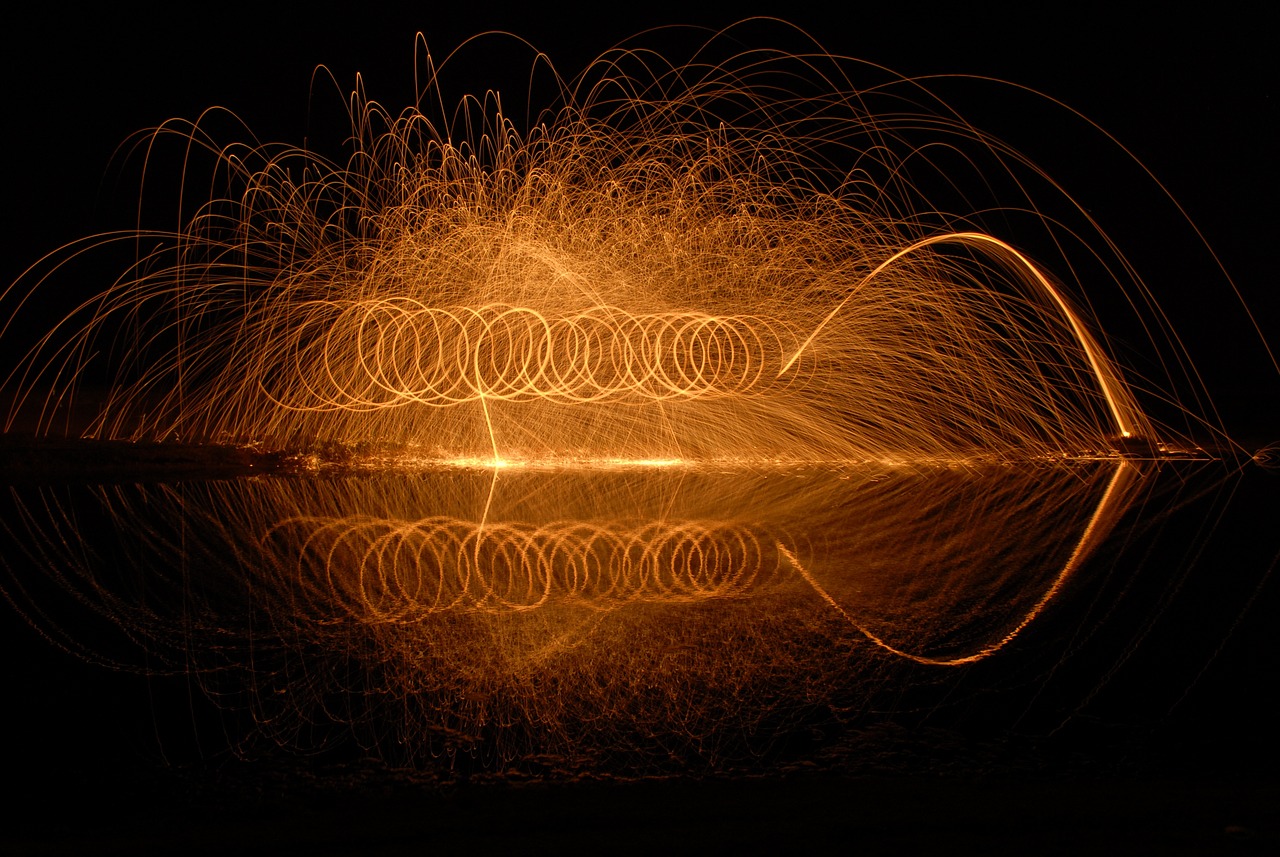
Color Theory Basics
Understanding color theory is essential for anyone venturing into the world of abstract painting. It's like having a roadmap that guides your creative journey, helping you make informed choices about the hues and shades you use. At its core, color theory explores how colors interact, how they can evoke emotions, and how they can be combined to create stunning visual effects.
One of the fundamental concepts in color theory is the color wheel, which is divided into primary, secondary, and tertiary colors. Primary colors—red, blue, and yellow—cannot be created by mixing other colors. When you mix these primary colors together, you get secondary colors: green, orange, and purple. Tertiary colors are made by mixing a primary color with a secondary color, resulting in hues like red-orange or blue-green. This wheel serves as a valuable tool for artists to understand color relationships and harmonies.
When creating abstract art, you might want to consider the following color schemes:
- Complementary Colors: These are colors that are opposite each other on the color wheel, like blue and orange. Using complementary colors can create a striking contrast that captures the viewer's attention.
- Analogous Colors: These colors are next to each other on the color wheel, such as blue, blue-green, and green. They create a harmonious and cohesive look, perfect for a soothing abstract piece.
- Triadic Colors: This scheme involves three colors that are evenly spaced around the color wheel, like red, yellow, and blue. It adds vibrancy and balance to your artwork.
Another important aspect of color theory is understanding the emotional impact of colors. For instance, warm colors like red and yellow can evoke feelings of energy and excitement, while cool colors like blue and green often convey calmness and tranquility. As an abstract artist, you can use these emotional triggers to communicate feelings and narratives through your work, even if the subject matter is non-representational.
Moreover, the concept of color value—the lightness or darkness of a color—can add depth to your paintings. By manipulating the value, you can create contrast and draw attention to specific areas of your artwork. This technique can be especially effective in abstract art, where the focus is often on the interplay of colors rather than on realistic representation.
In summary, a solid grasp of color theory can significantly enhance your abstract painting skills. By understanding how colors interact, their emotional significance, and how to use color schemes effectively, you can elevate your artwork to new heights. Remember, experimentation is key! Don't be afraid to play with colors and discover what resonates with your artistic vision.
Q1: Do I need to be an expert in color theory to start abstract painting?
A1: Not at all! While understanding color theory can enhance your work, the beauty of abstract painting lies in personal expression. Feel free to experiment and develop your unique style.
Q2: Can I use any colors I want in my abstract art?
A2: Absolutely! Abstract art is all about creativity and freedom. You can use any colors that inspire you, regardless of traditional color rules.
Q3: How can I improve my understanding of color theory?
A3: Consider taking a color theory class, reading books on the subject, or simply experimenting with colors in your artwork. Observing how colors interact in nature can also be incredibly helpful.
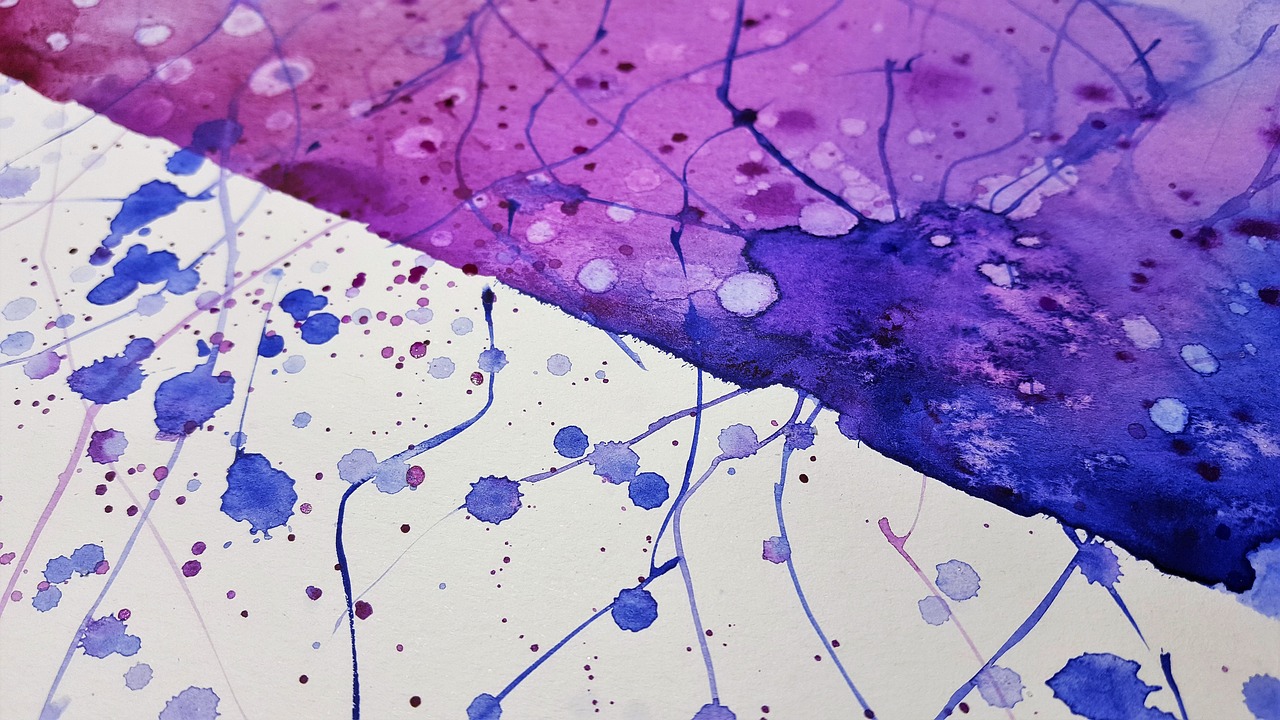
Layering Techniques
When it comes to abstract painting, can transform a simple canvas into a complex, captivating piece of art. Think of layering like building a sandwich; each layer adds flavor and texture, creating a more satisfying experience. In abstract art, layering allows you to create depth and dimension, giving your work a sense of movement and intrigue. So, how do you master this technique? Let's dive in!
The essence of layering lies in the application of multiple coats of paint, where each layer interacts with the ones beneath it. Start with a base layer—this could be a solid color or a simple wash that sets the tone for your painting. Once that layer is dry, you can begin adding more colors, textures, and shapes. The key here is to allow some of the underlying layers to show through, which can create a beautiful interplay of colors and forms.
Here are a few tips to help you get started with layering:
- Start Thin: Begin with thin washes of paint to establish your base. This allows for easier blending and manipulation of subsequent layers.
- Experiment with Transparency: Use transparent paints or mediums to allow underlying colors to peek through, creating a sense of depth.
- Vary Your Tools: Different brushes, palette knives, or even sponges can create unique textures in your layers. Don’t be afraid to experiment!
- Drying Time Matters: Be mindful of the drying time between layers, especially when using oil paints. This can affect how the colors interact.
As you build your layers, consider the emotional impact of your choices. Each color and texture can evoke different feelings, so think carefully about what you want to communicate through your art. For instance, warm colors like reds and oranges can create a sense of energy and excitement, while cool colors like blues and greens tend to evoke calmness and serenity. By layering these colors thoughtfully, you can guide the viewer's emotional journey through your artwork.
Additionally, layering can also be a great way to incorporate different materials into your abstract pieces. For example, you might add textured elements like sand, fabric, or paper between layers of paint. This not only enhances the visual interest but also adds a tactile quality to your work. Imagine running your fingers over a canvas with varied surfaces—it's an experience that can draw viewers in even more.
In conclusion, mastering layering techniques in abstract painting is all about experimentation and intuition. Allow yourself the freedom to explore and make mistakes; after all, every layer is a step toward discovering your unique artistic voice. So grab your brushes, unleash your creativity, and let the layers unfold!
Q: What is the best way to start layering in abstract painting?
A: Begin with a thin wash of color as your base layer. Allow it to dry before adding more colors or textures. Remember to let some of the underlying layers show through for depth.
Q: How do I choose colors for layering?
A: Consider the emotional impact of colors. Use a mix of warm and cool tones to create contrast and interest. Experiment with transparency to allow underlying colors to enhance your composition.
Q: Can I use different materials in my layers?
A: Absolutely! Incorporating materials like sand, fabric, or paper can add texture and dimension to your artwork. Just be sure to consider how they will interact with your paint layers.
Q: How long should I wait between layers?
A: This depends on the type of paint you are using. Acrylics dry quickly, so you can often add another layer within minutes. However, oil paints take much longer, sometimes requiring a day or more for optimal layering.
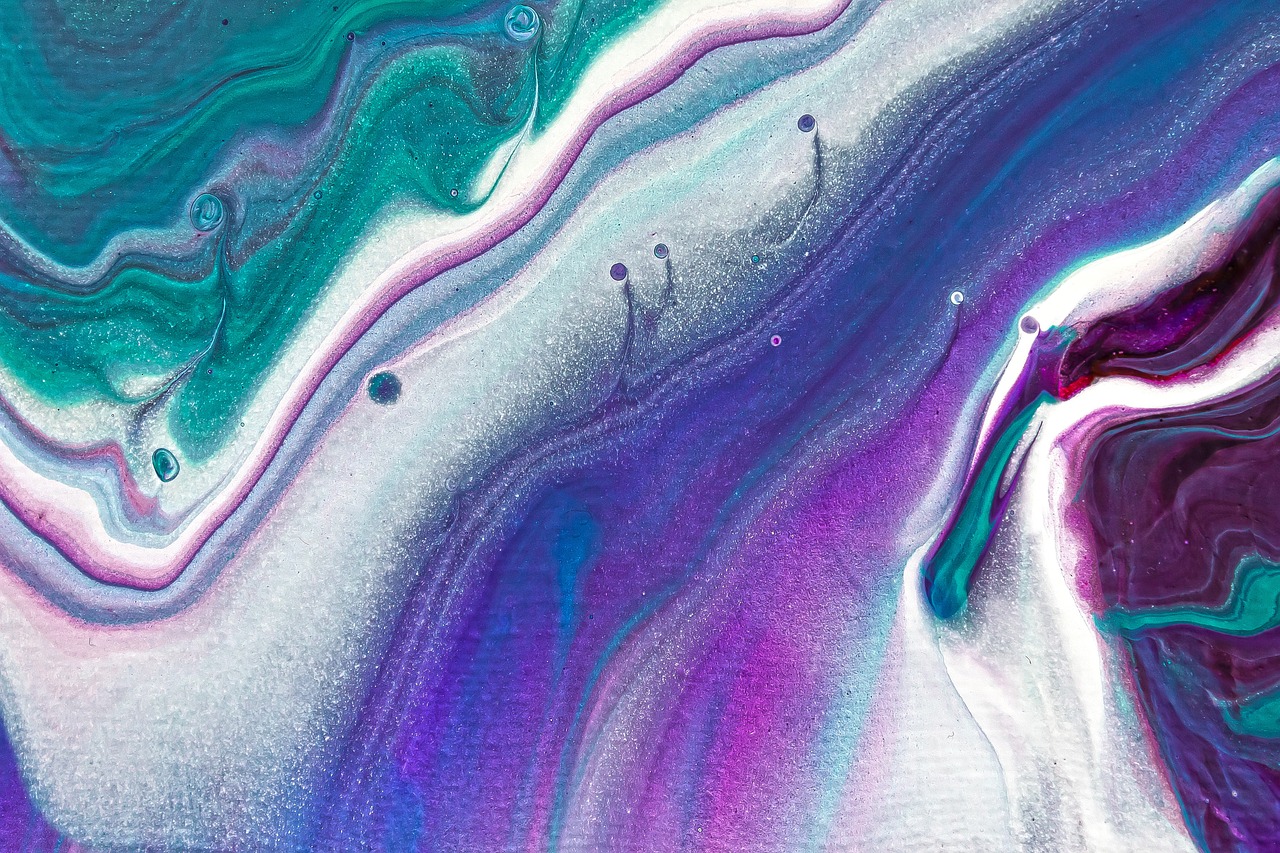
Finding Inspiration for Your Artwork
Inspiration is the lifeblood of any creative endeavor, especially in the vibrant world of abstract painting. It’s crucial to tap into various sources that can ignite your imagination and fuel your artistic journey. Think of inspiration as the spark that ignites a fire; without it, your canvas remains blank, devoid of life and color. So, where can you find this elusive muse? Let’s explore some of the most enriching sources that can help you draw inspiration for your artwork.
One of the most profound sources of inspiration lies in nature. The natural world is a treasure trove of colors, shapes, and textures waiting to be translated onto your canvas. Whether it's the vibrant hues of a sunset, the intricate patterns of leaves, or the soft gradients of a morning sky, each element offers endless possibilities. When you step outside, take a moment to observe the world around you. How do the colors blend? What emotions do the shapes evoke? By immersing yourself in nature, you can cultivate a deeper understanding of how to express these elements in your abstract work.
Another powerful source of inspiration is your personal experiences. Our emotions and life stories are unique, and they provide a rich foundation for creating art that resonates on a deeper level. Think about significant moments in your life—joy, sorrow, love, or even chaos. How can you translate these feelings into visual forms? Perhaps you could use bold strokes to convey anger or soft, flowing lines to represent peace. By channeling your personal experiences into your artwork, you not only create something authentic but also invite viewers to connect with your story.
Additionally, everyday life can be a wellspring of inspiration. The mundane aspects of daily living—such as the rhythm of city life, the patterns of shadows cast by buildings, or the play of light on a simple object—can be transformed into abstract interpretations. Keep a sketchbook handy to jot down ideas or capture fleeting moments that catch your eye. You might be surprised at how the ordinary can inspire extraordinary art.
To help you harness inspiration more effectively, consider creating an inspiration board. This can be a physical board or a digital collection where you compile images, color palettes, textures, and quotes that resonate with you. The process of curating your inspirations can clarify your artistic vision and provide a reference point when you sit down to create.
In conclusion, finding inspiration for your abstract artwork can come from various sources, including nature, personal experiences, and everyday life. By remaining open to these influences and actively seeking them out, you can cultivate a rich well of creativity that will serve you throughout your artistic journey. Remember, the key is to observe, reflect, and let your emotions guide your brush. As you embark on this creative adventure, embrace the surprises that come your way, and allow them to explode into vibrant expressions on your canvas.
- What is abstract painting? Abstract painting is an art form that emphasizes color, shapes, and forms rather than representational imagery. It allows artists to express emotions and ideas without the constraints of traditional subjects.
- How can I find my unique style in abstract painting? Experiment with different techniques, materials, and subjects. Over time, you’ll discover what resonates with you, helping you develop a unique artistic voice.
- Do I need to be an experienced artist to try abstract painting? Absolutely not! Abstract painting is accessible to everyone, regardless of skill level. It’s all about exploring your creativity and having fun!
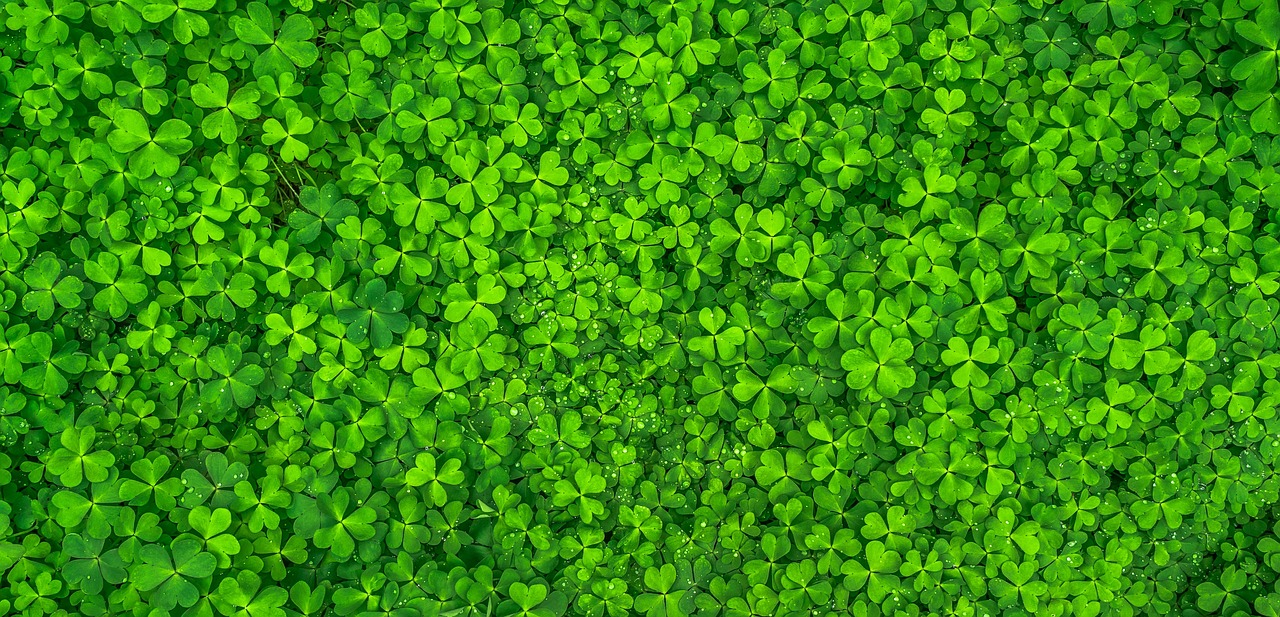
Exploring Nature
When it comes to finding inspiration for your abstract paintings, nature stands out as an endless wellspring of creativity. Just think about it: the vibrant hues of a sunset, the intricate patterns of leaves, or the dynamic forms of clouds can all spark your imagination and lead to stunning artworks. Nature is not just a backdrop; it’s a living canvas that invites you to observe, interpret, and express your feelings through your art. So, how can you tap into this rich source of inspiration?
First, it's essential to immerse yourself in the natural world. Take a walk in the park, hike a trail, or simply sit in your backyard. As you do, pay close attention to the details that often go unnoticed. Notice the way light dances on water or how shadows play across the ground. These elements can translate beautifully into your abstract work, allowing you to capture the essence of what you see and feel. You might even find that certain colors resonate with you, prompting you to explore those shades in your palette.
Another approach is to keep a nature journal. This doesn't have to be anything fancy; a simple notebook will do. Jot down your thoughts, sketch quick representations of what you see, or even collect small items like leaves or flowers. This practice not only enhances your observational skills but also serves as a reference point when you’re back in your studio. You can look back at your notes and sketches to remind you of the feelings and ideas that nature inspired.
To help you further, here are a few tips on how to translate your observations into abstract art:
- Color Palette: Choose colors that reflect the natural elements you observed. For instance, if you were inspired by a forest, consider using various shades of green, brown, and earthy tones.
- Textures: Incorporate different techniques to mimic natural textures. Use palette knives for rough bark or sponges for soft clouds.
- Shapes and Forms: Abstract art often focuses on shapes rather than realistic representations. Take the curves of a river or the jagged edges of mountains and interpret them in your unique style.
Ultimately, the key is to let your experiences with nature guide your brush. Each painting can become a personal reflection of your interactions with the environment around you. Just like a tree that grows in its unique way, your art will evolve as you explore and experiment. So, grab your paints, head outside, and let nature be your muse!
Q: How can I find inspiration in nature if I live in a city?
A: Even in urban environments, nature can be found. Look for parks, gardens, or even small patches of greenery. Observe the shapes of buildings against the sky or the patterns of light through trees. Nature is everywhere; you just need to look for it!
Q: What if I’m not good at drawing or sketching?
A: Don’t worry! Your nature journal doesn’t have to be perfect. The goal is to capture your thoughts and feelings. Use simple shapes or even words to express what you observe. Remember, art is about expression, not perfection.
Q: Can I use photographs instead of painting from life?
A: Absolutely! Photographs can be a great reference for your abstract work. Just ensure you interpret the images in your own style rather than copying them directly.
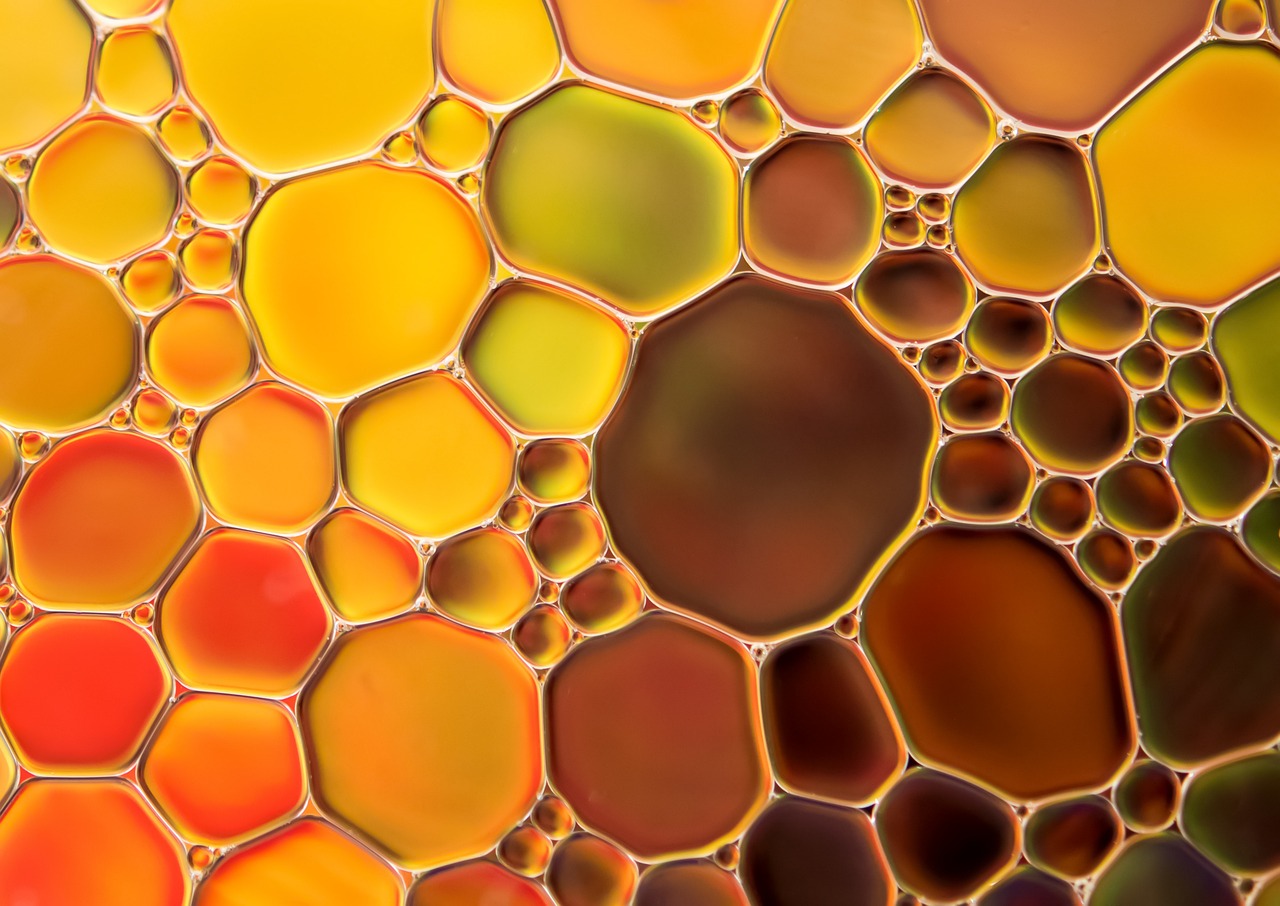
Using Personal Experiences
When it comes to creating abstract art, your personal experiences can be a wellspring of inspiration. Think of your life as a vibrant tapestry, woven with emotions, memories, and stories that are uniquely yours. Each thread represents a moment, and as you paint, you can pull from this tapestry to express your feelings on the canvas. Have you ever felt overwhelmed by a rush of emotions? That feeling can translate into bold strokes and vibrant colors, creating a piece that resonates not only with you but with others who view it.
Consider this: every time you experience something profound—be it joy, sorrow, or even a fleeting moment of peace—there's an opportunity to capture that essence in your artwork. For instance, the excitement of a summer festival could inspire a riot of colors and dynamic shapes, while a quiet evening spent in solitude might lead to softer hues and gentle forms. By channeling these experiences, you can create art that is not just visually appealing but emotionally impactful.
To effectively use your personal experiences in abstract painting, you can follow these simple steps:
- Reflect: Take some time to think about significant moments in your life. What emotions do they evoke? How can you visually represent those feelings?
- Experiment: Don’t be afraid to play with different techniques and colors that resonate with your experiences. Let your intuition guide you.
- Document: Keep a journal of your thoughts and feelings as you create. This can help you connect deeper with your art and understand your creative process.
Using your personal experiences doesn’t mean you have to paint a literal representation of them. In fact, abstract art thrives on the freedom of interpretation. For example, if you had a life-changing trip to the mountains, you might not paint the mountains themselves but rather the feelings of awe and tranquility they inspired. This approach invites viewers to engage with your work on a personal level, allowing them to find their own meanings within your art.
Moreover, don't shy away from vulnerability in your art. The most compelling pieces often emerge from a place of raw honesty. When you paint your truth, it resonates with others who may have experienced similar feelings. It’s like sharing a piece of your soul, inviting others to connect with you through your artwork. Remember, abstract painting is not just about the end result; it’s about the journey of self-discovery and expression that unfolds along the way.
In conclusion, your personal experiences are invaluable tools in the realm of abstract painting. They allow you to infuse your art with authenticity and emotional depth. So grab your brushes, let your heart guide you, and watch as your unique experiences transform into stunning visual narratives on canvas.
Q: How can I start using my personal experiences in my abstract paintings?
A: Begin by reflecting on significant moments in your life and the emotions they evoke. Use those feelings as inspiration for your color choices and brush techniques. Don't be afraid to experiment and let your intuition lead the way!
Q: Is it necessary to depict my experiences literally in my art?
A: Not at all! Abstract art thrives on interpretation. You can express your experiences through colors, shapes, and textures that convey the emotions associated with those moments rather than painting them literally.
Q: How do I overcome the fear of sharing my personal experiences through my art?
A: Remember that art is a personal journey. Embrace vulnerability, and understand that your unique perspective can resonate with others. Sharing your truth can foster connection and understanding, both for you and your audience.
Frequently Asked Questions
- What is abstract painting?
Abstract painting is an art form that emphasizes colors, shapes, and forms rather than depicting objects or scenes from the real world. It allows artists to express emotions and ideas through non-representational means, creating a unique visual experience.
- Do I need prior experience to start abstract painting?
No prior experience is necessary! Abstract painting is all about exploration and creativity. Beginners can dive right in, experiment with colors and techniques, and develop their own style over time.
- What materials do I need for abstract painting?
Essential materials include paints (like acrylics, oils, or watercolors), brushes (various types for different effects), canvases or paper, and palette knives. You can start with basic supplies and gradually expand your toolkit as you learn.
- What types of paint are best for beginners?
Acrylic paints are often recommended for beginners due to their versatility, quick drying time, and easy cleanup. They can be used on various surfaces and can be mixed with water for different effects.
- How do I choose the right brushes for abstract painting?
Selecting the right brushes can greatly impact your artwork. Different brush shapes (like flat, round, or filbert) create different effects. Experimenting with various brushes will help you discover the styles you prefer.
- What is color theory, and why is it important?
Color theory is the study of how colors interact and the emotions they evoke. Understanding color relationships can enhance your compositions and help you create more impactful abstract paintings.
- How can I find inspiration for my abstract art?
Inspiration can come from many sources! Nature, personal experiences, music, and even your emotions can fuel your creativity. Don't hesitate to explore different avenues and see what resonates with you.
- Can I use personal experiences in my abstract paintings?
Absolutely! Channeling your personal experiences and emotions into your artwork can lead to authentic and meaningful creations. It allows you to express your unique perspective and connect with viewers on a deeper level.



















